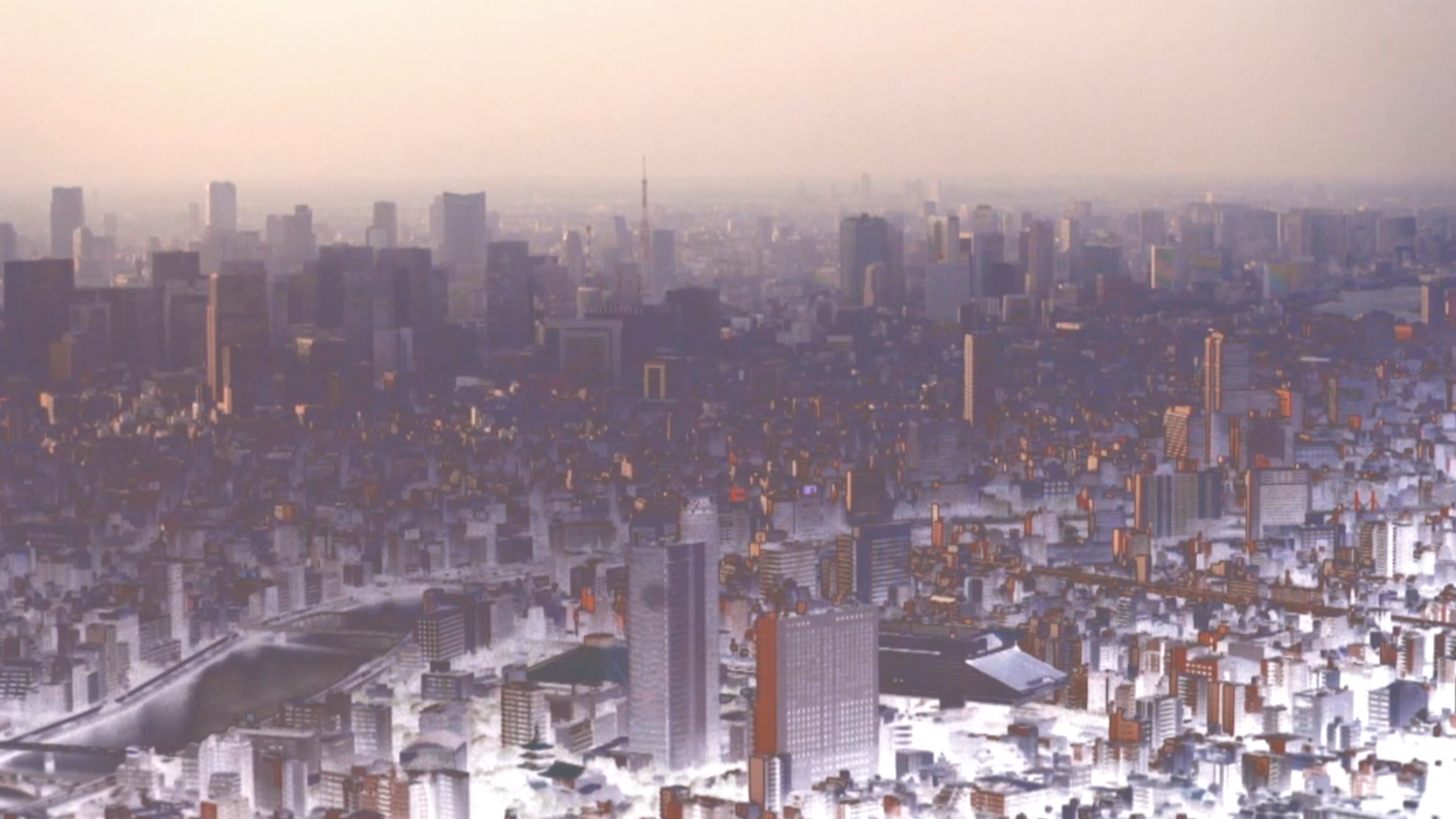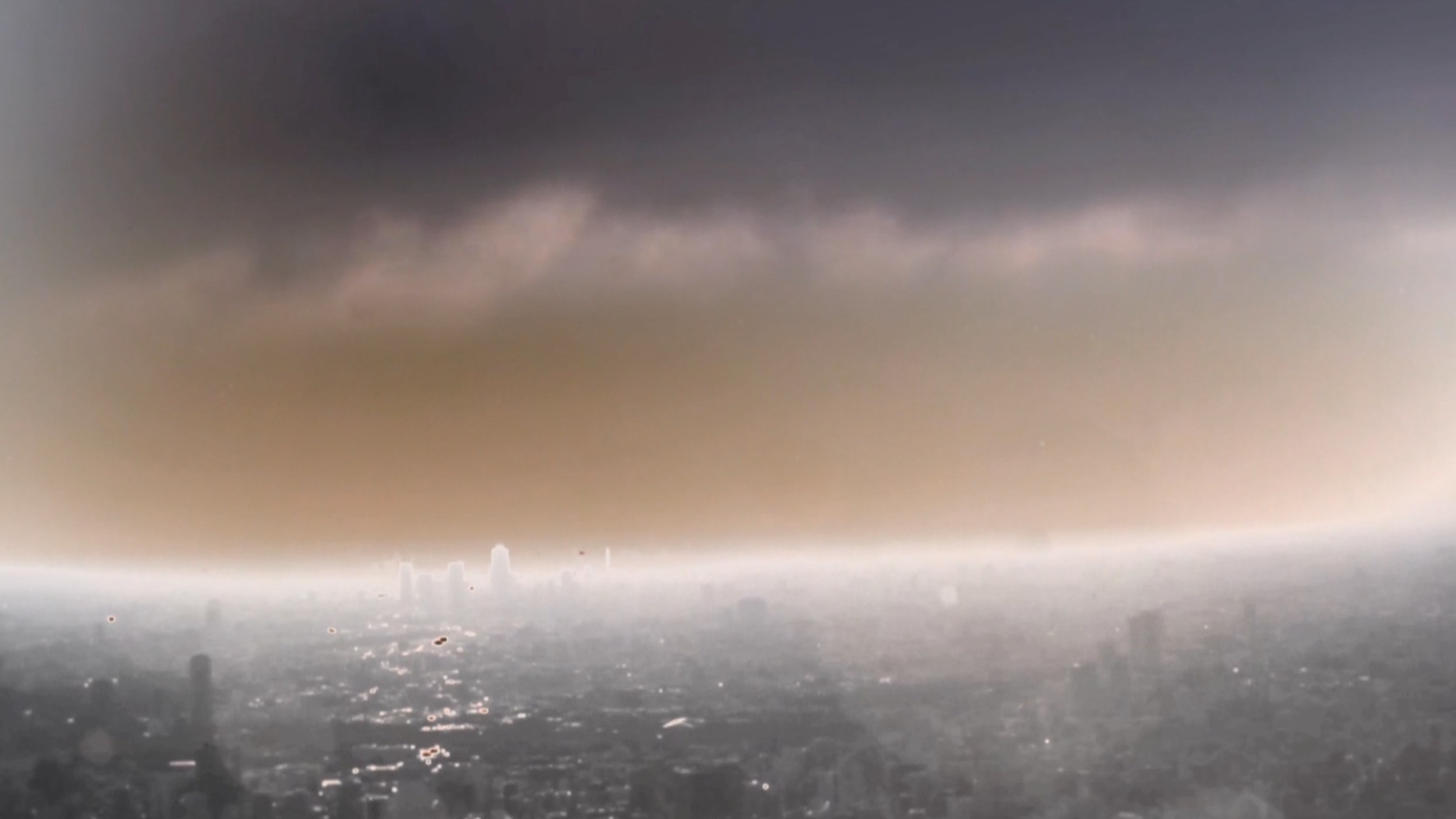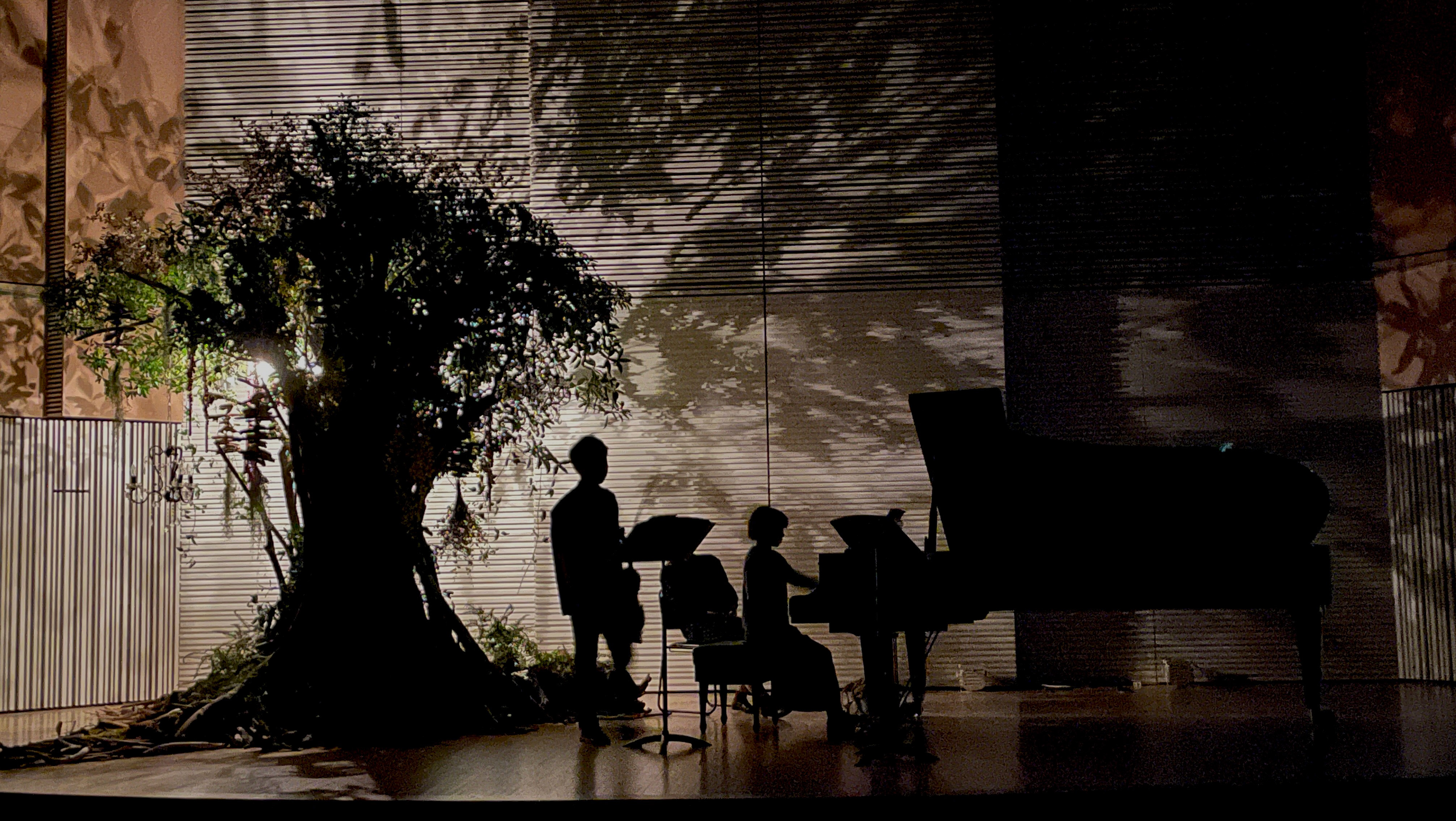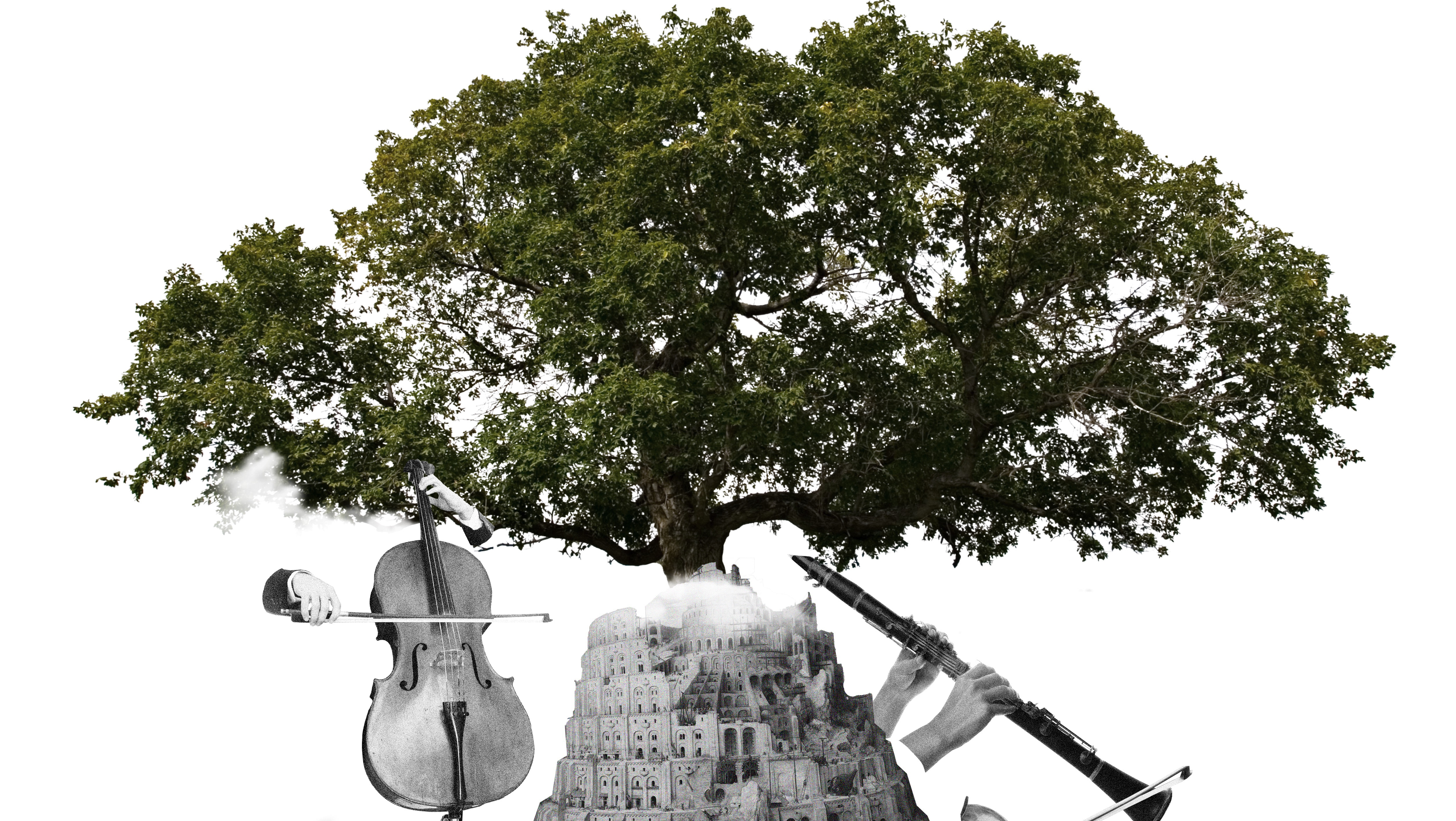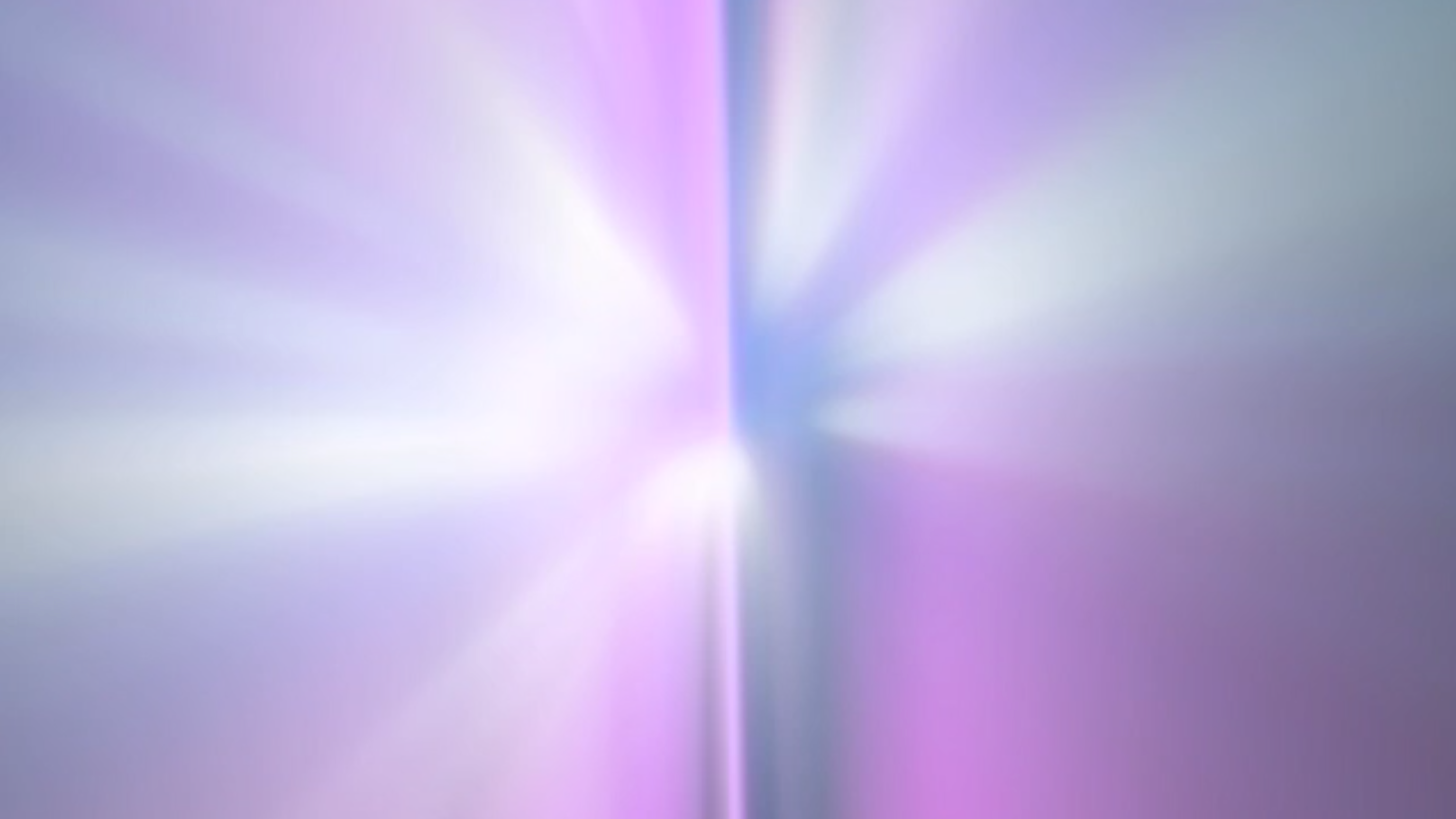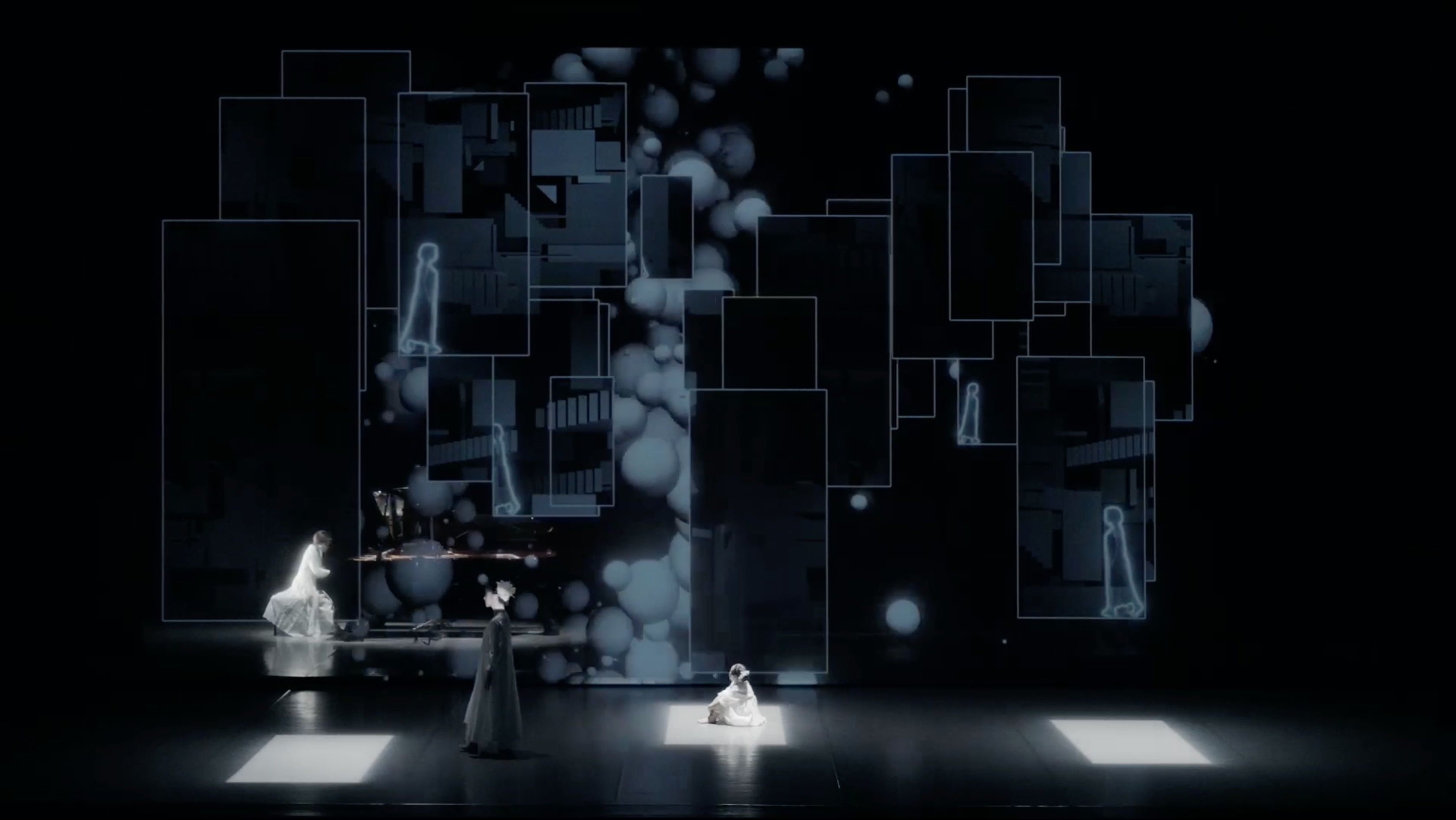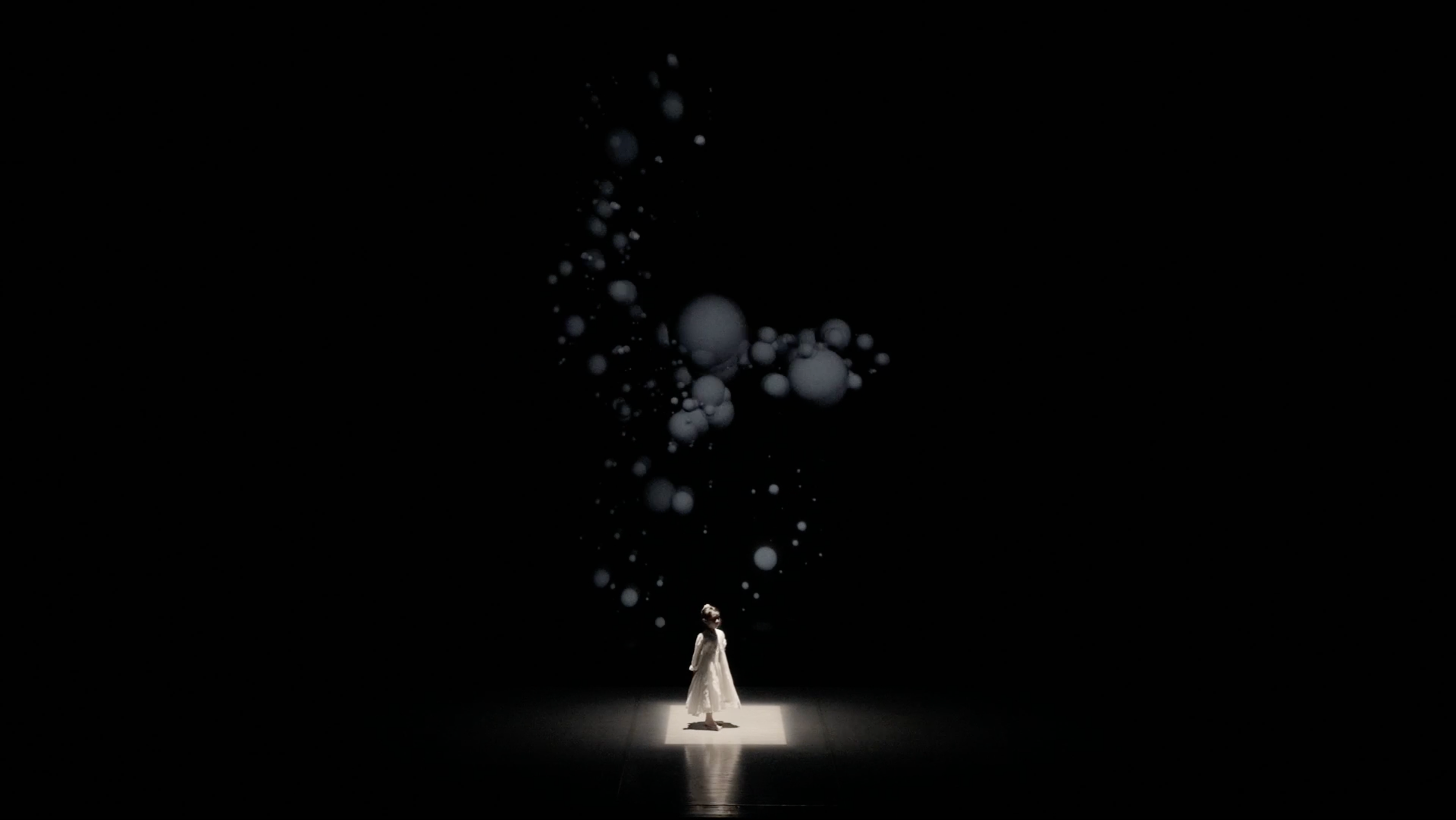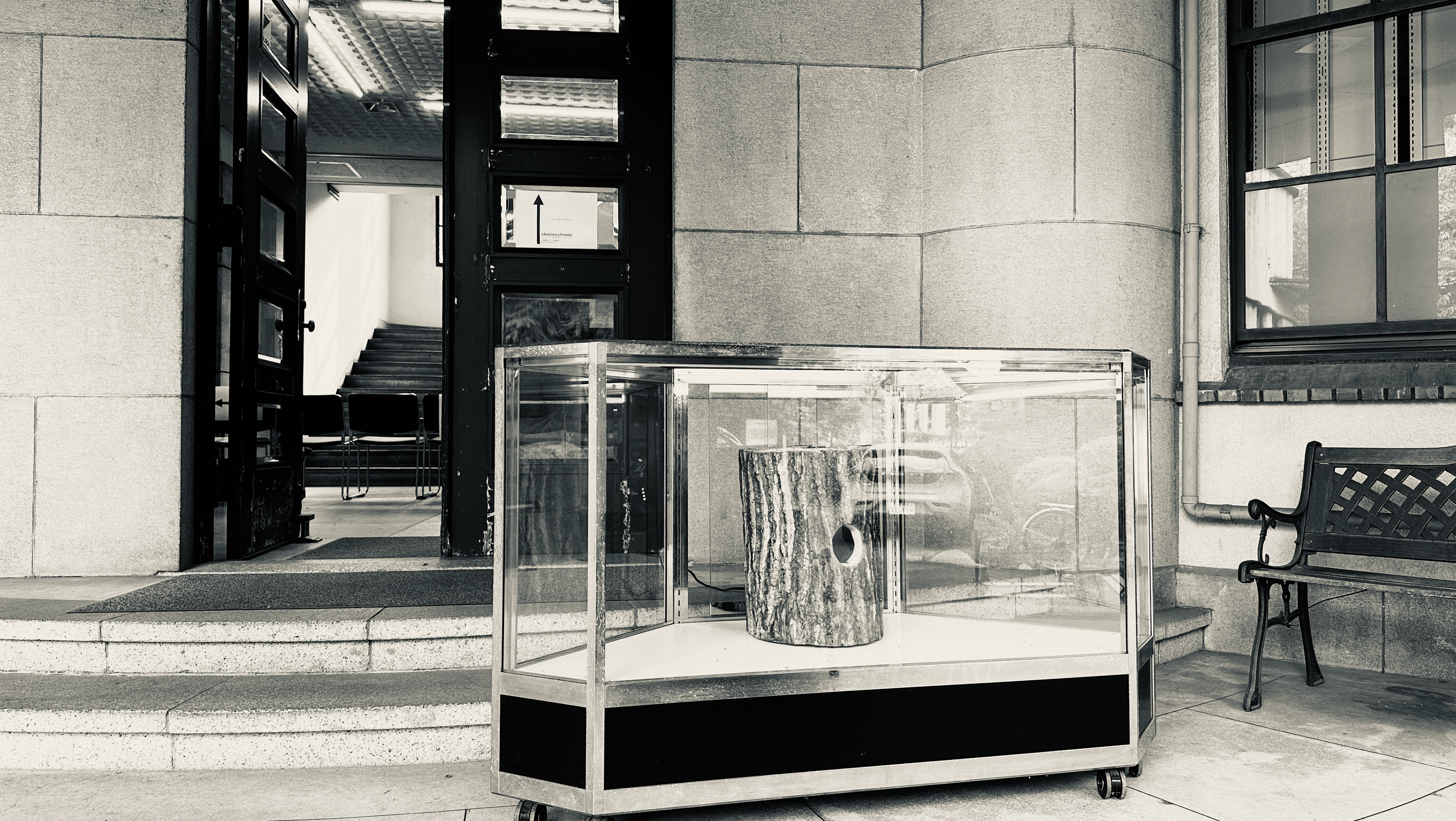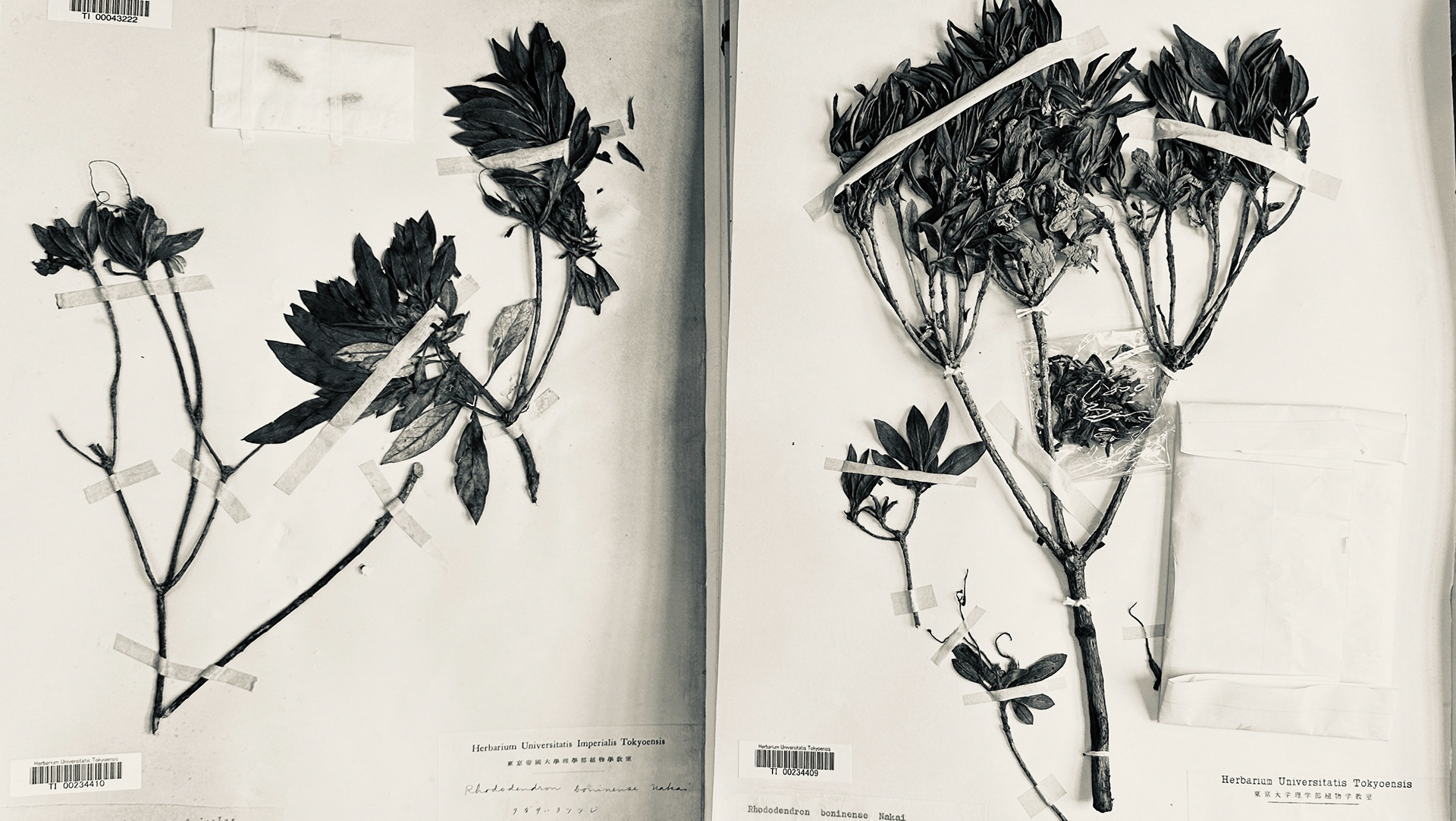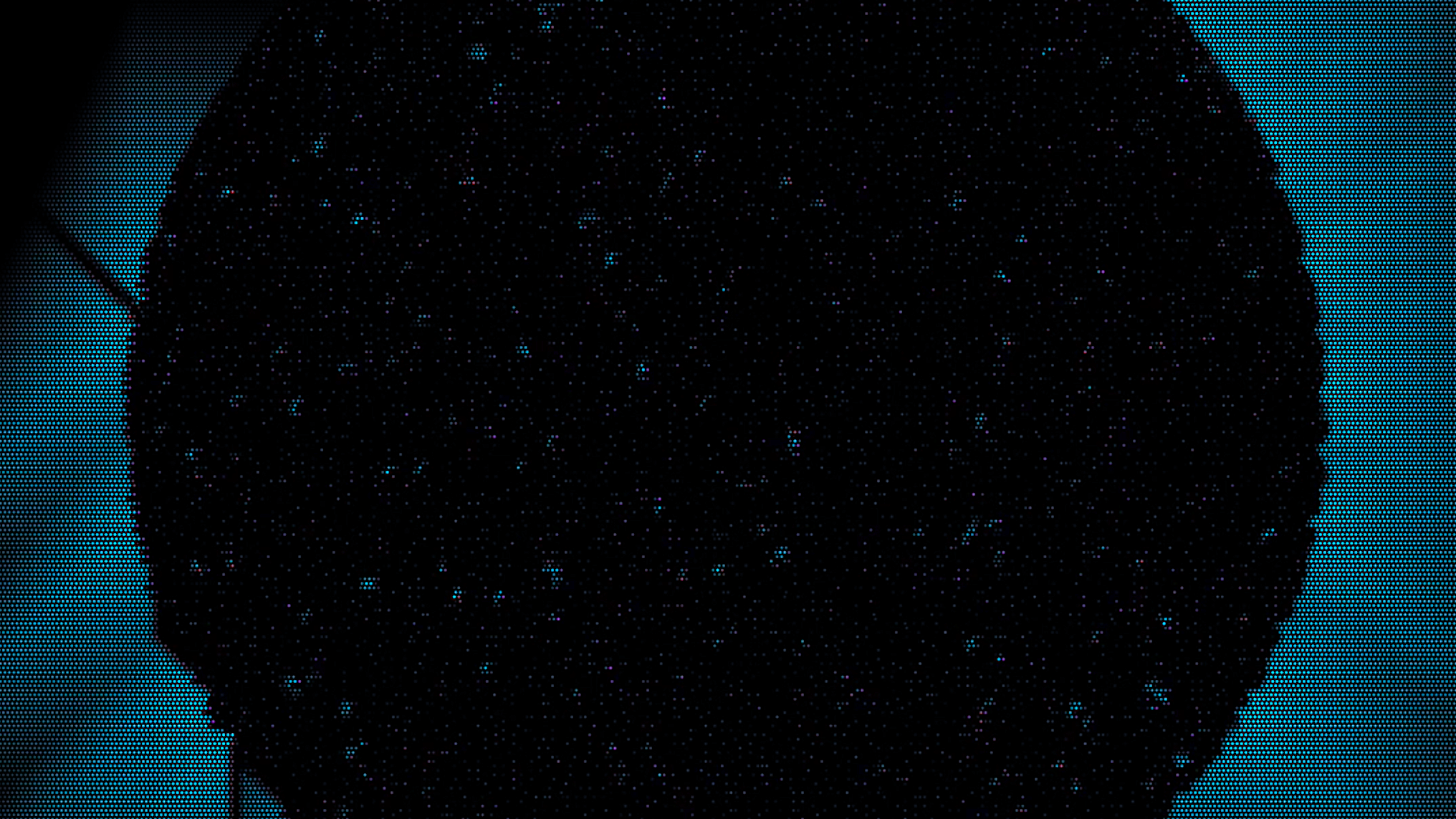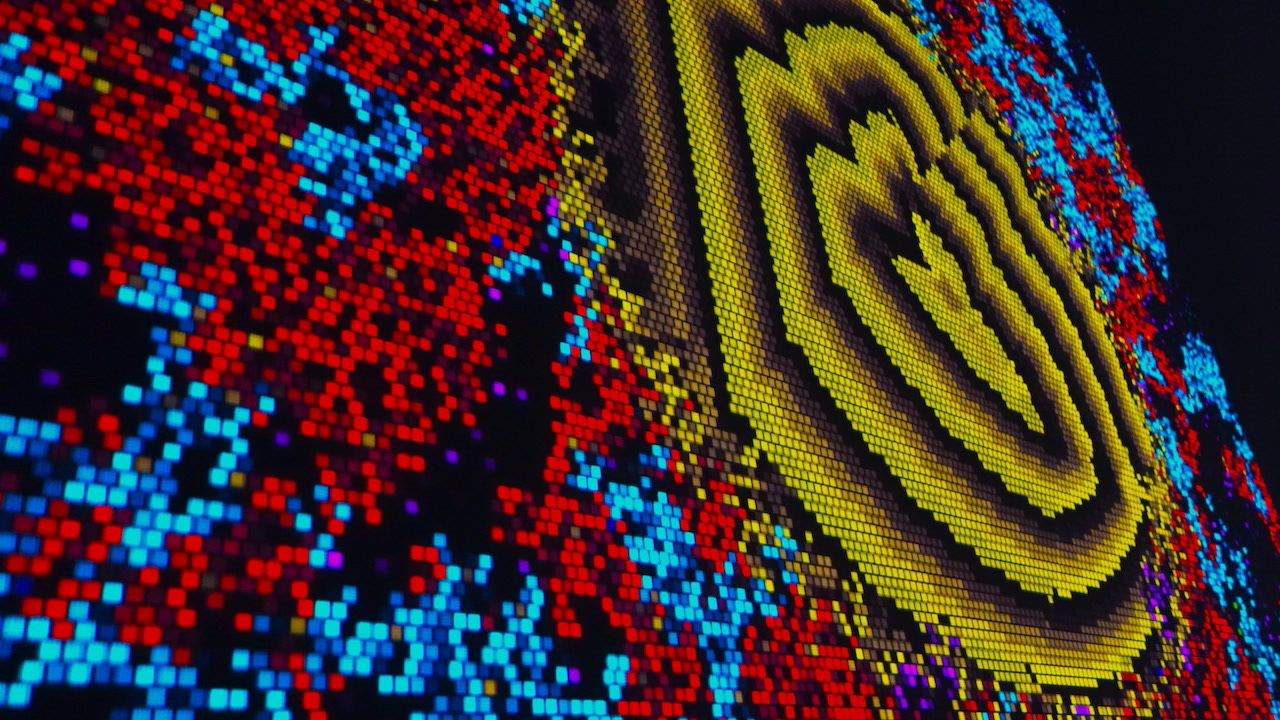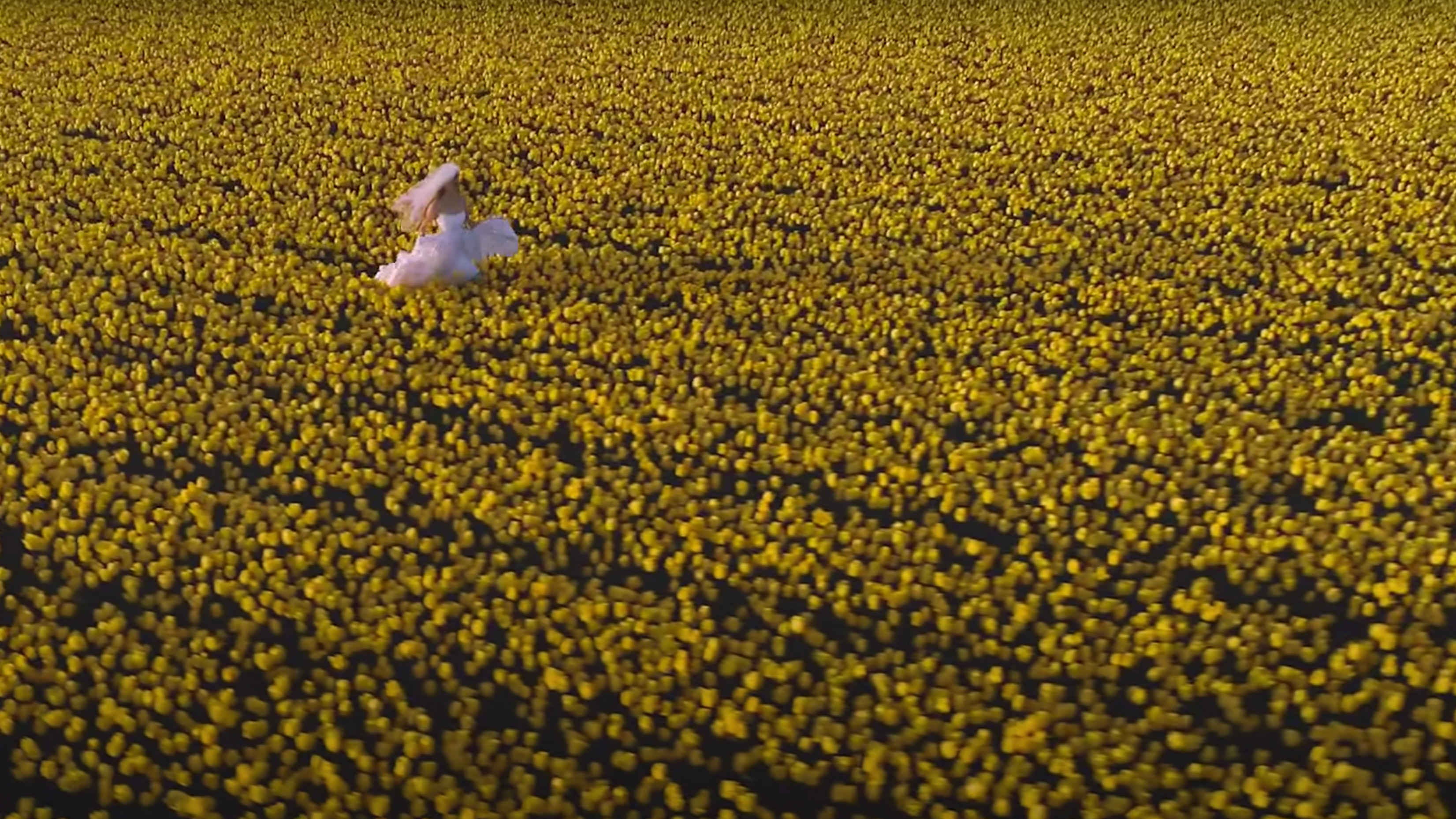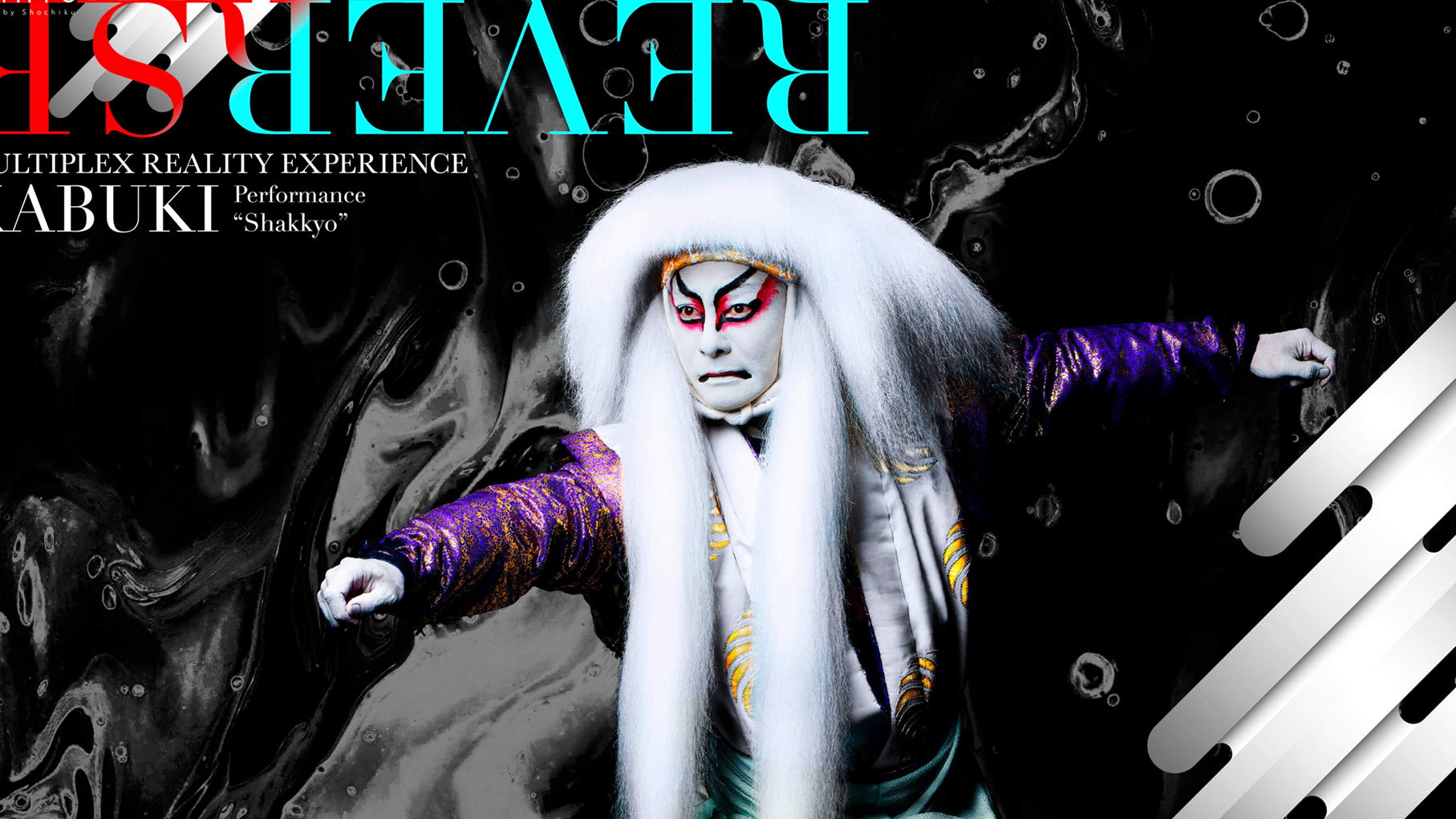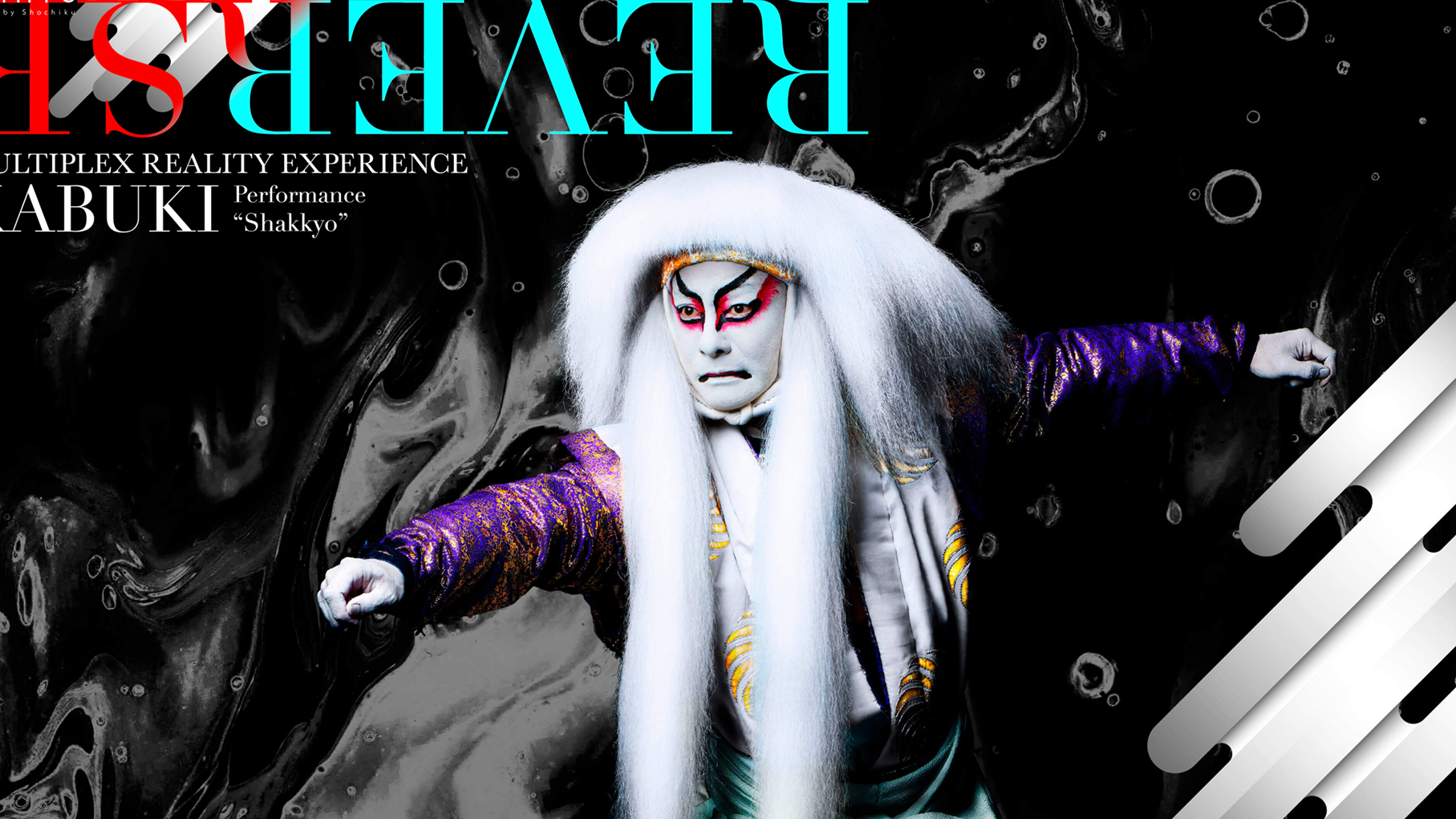Objet a
What is the universe's origin, and what is the role of a human within it? This question is the foundation of many of the world's creation myths. These stories provide a sense of connection and purpose for humanity and suggest how they fit into the universe. But how do contemporary preoccupations with technological innovation and scientific progress affect our sense of self and reason? With omnipresent technology providing an on-demand distraction, how can we reconnect and reflect on these more critical questions of existence and progress? These ideas occupy a region of inquiry explored by the Japanese art and music collective Objet a.
Objet a takes its name from the psychoanalytic theory of Jacques Lacan. The name references Lacan's idea on the origin of desire and its unobtainable goals. The collective and its creative director Wataru Iwata are based in Hokuto City, Japan. With fellow member Mana Fukui and various other collaborators, Objet a blends music, animation, and performance into events and installations that echo these more essential questions. Elements of philosophy and mythology reflect throughout the works forming a lattice from which the images and sounds emanate.
Images and animation from the group find inspiration in the aesthetics of 3D animation and data visualizations. Wireframes, grids, and particles fill the screen with a black and white palette echoing the multi-media works of Ryoji Ikeda or the early animations Rebecca Allen created for the German electronic band Kraftwork. Like Ikeda and Allen, Object a's work is a multi-media experience. Musical composition and performance are integral to the artworks weaving together sound and images. Piano, field recordings, and electronic samples establish a path between the natural and digital worlds.
Object a's animation Sphere is highlighted in the 2022 edition of the Supernova Animation Festival. Denver Digerati’s Barry Whittaker, spoke with Wataru Iwata about the project and ideas in the work of Objet a.
>How did Objet a begin?
My initial goal was to establish an organization that would serve as the mother body for future art festivals in the southern foothills of the Yatsugatake Mountain-chains, where I currently reside. However, we did not intend to organize an art festival immediately after its establishment. Once we became the organizer, it would be difficult in terms of time and effort to commit ourselves to our own art production and activities. First of all, we thought that it was important to make people around us understand Objet a's way of being and its attitude by conducting our own expression in our own way.
現在私が住んでいる八ヶ岳南麓で将来的に芸術祭を企画しようと考え、その活動母体となる団体を設立しようとしたのが当初の目的でした。ただ、設立してすぐに芸術祭をオーガナイズすることは考えていませんでした。オーガナイザーになってしまうと、自分たちの作品制作や活動にコミットすることが時間的にも労力的にも難しくなります。まずは、自分たちの表現を、自分たちの方法で行っていくことで、Objet aのあり方や姿勢を周囲に理解してもらうことが大切だと考え、現在に至ります。
>Who are the members and collaborators in Objet a?
Objet a consists of three members: myself, the president of Objet a, who is in charge of music production, visual art, and direction; Fukui, a pianist and music director specializing in modern and contemporary music; and Togami, a researcher and producer in a variety of fields. Although belonging to Objet a, each of us is basically independent and not subordinate to the association. They are formed by independent artists and researchers who work together on projects that are larger than they could ever undertake individually. When working on or organizing a project at Objet a, we work with artists from a variety of genres, depending on the purpose of the project. In the process of working as independent artists and creators, our position is no different from that of outside collaborators.
So far, we have worked with contemporary dancer Motoko Hirayama, visual programmer Ryo Kanda, lighting designer Takayuki Fujimoto, costume designer Suzuki Takayuki, photographer Ryo Ohkawara, video artist Yuki Inomata, flower arrangement artist Nichimasa Toizumi, great instrumental players like Ludovit Kanta, Kazuhiro Takagi, and creative company Konel, and many others. We have been working with talented creators and artists who we can share the same objectives, whether they are individuals, or companies.
Objet aのメンバーは音楽制作、ヴィジュアルアート、ディレクションをおこなっている代表の私、モダン、コンテンポラリーミュージックを得意とするピアニスト兼音楽監督の福井、また多様なフィールドのリサーチャーであり、プロデューサーの戸上の3人がメンバーです。Objet aに所属しているといっても、それぞれは基本的に独立した活動を行なっており、従属した存在ではありません。あくまで独立した個人のアーティスト、リサーチャーによって形作られており、個人で手がけることができる以上の大掛かりなプロジェクトを協力して行います。インディペンデントなアーティスト、クリエイターとして作品の一部を手がける過程においては、外部のコラボレーターとなんら立場は変わりません。Objet aでプロジェクトを行う、主催する際には、その目的に応じて、さまざまなジャンルのアーティストたちとクリエーションを行います。これまでに、コンテンポラリーダンサーの平山素子、ヴィジュアルプログラミングの神田竜、ライティングデザイナーの藤本隆之、衣装デザイナーのsuzuki takayuki、写真家の大川原諒、映像作家の猪俣由貴、華道家の戸泉日真、演奏家ではルドヴィート・カンタ、高木和弘、クリエイティブカンパニーのKonel、など、個人、企業を問わず目的を共有できる才能に溢れたクリエイターたちと作品制作を行なってきました。
>You have a background in art and music, and your projects include sound and visuals. When creating a project like Sphere, do you begin with music, images, or an abstract idea?
Sphere was originally created as a 6-minute introduction to Miroirs (https://miroirs.objet-a.art/en), a stage piece, or a composite work of art, that condenses the themes that run throughout the work and it was released as a spin-off after the performance.
The actual process of Sphere/Miroirs began with an abstract idea, but that abstract idea was tied to the visual imagery, so if you ask me which came first, I don't have a simple answer. I shared the theme with the visual programmer Ryo KANDA, created a context using references, and established a timeline. Next, we created the music that would develop along that timeline, and then applied the CG to the music at last.
The actual process of Sphere/Miroirs began with an abstract idea, but that abstract idea was tied to the visual imagery, so if you ask me which came first, I don't have a simple answer. I shared the theme with the visual programmer Ryo KANDA, created a context using references, and established a timeline. Next, we created the music that would develop along that timeline, and then applied the CG to the music at last.
Sphereですが、元々はMiroirs(https://miroirs.objet-a.art/en)という舞台作品、あるいは複合芸術作品と呼んでもよいかと思いますが、この作品全体に渡って展開されるテーマを凝縮した約6分間のイントロダクションとして制作され、公演後にスピンオフ作品としてリリースしました。Sphere/Miroirsの制作は、抽象的なアイディアから始まっているのですが、その抽象的なアイディアはヴィジュアルイメージと結びついたものであったので、どちらが先かと尋ねられると、シンプルな答えが見つかりません。Sphereの実際の作業工程は、まずテーマをヴィジュアルプログラマーと共有し、レファレンスを用いてコンテを作り、タイムラインを設定しました。次にそのタイムラインに沿って展開する音楽を制作して、そこにCGを当てていくという順番で仕上げています。
>What are the ideas you’re exploring in Sphere?
As mentioned in the concept, I wanted to show that the "world" is generated by the image, and that the "world" spread out before "my" eyes is "me" itself. The sphere I was imagining is a spherical mirror. The spherical mirror reflects back everything as far as light can reach, but it cannot reflect the "self" forever. It can only be perceived when observed by the "other". What if another spherical mirror is placed next to it? Both spherical mirror a and spherical mirror b reflect everything in the world around them except themselves. Spherical mirror a can find itself in spherical mirror b, and spherical mirror b can find itself in spherical mirror a. The self reflected in the other is naturally also reflected in the other, and this continues to the point where the light converges. The spherical mirror a' and spherical mirror b', in which the self continues to be reflected in the other (and the other is reflected in itself), are no longer entities of a different nature than before.
This is an analogy I often use: we are part of the "world" but cannot see our own face with our own naked eyes, although we can see our surroundings outside of ourselves. It is only through the "other" that it becomes possible to see. To awaken to the Other is to reconsider the relationship between wholeness and the individual. When we speak of "the whole," naturally the self is included, but we often leave the self out of our awareness. This is because we are not accustomed to using the gaze of others in the process of recognizing the self.
In this work, visions projected on a spherical mirror repeatedly develop and converge with the "world" around them. This is a metaphor for the "world" that surrounds us, which we create by developing the images that arise in our inner world, and how we can finally grasp the "whole world" by recognizing ourselves as part of it. The world that one perceives as part of oneself is always contradictory, because to perceive oneself as part of the world, one needs not only oneself but also oneself as perceived by others, which cannot be properly grasped or completed by the individual. The ancient Greek self-reference paradox (Liar paradox), Gödel's incompleteness theorem, and when Lacan said that “ The objet α appears in the Golden mean when “the way I sees the other” is equal to “what I is within the whole””, express this very well and beautifully.
Long gone are the days when "objectivity" was considered as if it could exist solidly, but we still retain it everywhere in our present civilization. At the same time, it is the negative effects of this that seem to be inflating the problems of our time. By bringing to the surface the mechanisms and limitations of our perceptions, which have become routine in this reality, I hope to provide one of the opportunities for more people to gain a new paradigm-based way of thinking and seeing things. That is what I aimed for with this work.
コンセプトでも言及しているのですが、「世界」がイメージによって生成され、「私」の眼前に広がる「世界」が「私」そのものであることを見せたかったのです。私が想像していた球体は鏡面球です。鏡面球は光が届く限りの全てを映し返しますが、「自己」を映し出すことは永遠にできません。それは「他者」によって観察された時にのみ認識されます。そこにもう一つ鏡面球が置かれたらどうでしょう?鏡面球aも鏡面球bも自身以外の周りの世界全てを反射します。そして鏡面球aは鏡面球bの中に、鏡面球bも鏡面球aの中では、自らを見つけることができます。他者の中に映り込んだ自身の中には、当然またその他者が映り込んでおり、これは光が収束するところまで永遠に続きます。自身が、他者の中に映り込み続ける(そしてその他者は自身の中に映り込んでいる)鏡面球a’と鏡面球b’は、もはや以前とは異なる性質をもつ存在です。
これはよく使う例えなのですが、私たちは「世界」の一部でありながら、自分以外の周りを見ることはできますが、自分の肉眼で自分の顔をみることができません。それは「他者」によってのみ、見ることが可能になります。他者に目覚めるということは、全体性と個との関係を見つめ直すことに他ならないのです。「全体」といった場合、当然そこには自己も含まれるはずなのですが、人は往々にしてそこに含まれる自身については意識の外に置いてしまいます。なぜなら私たちは、自分自身を認識する過程で、他者の視線を用いることに慣れていないからです。
この作品の中では、鏡面球に映し出されるヴィジョンが、周りの「世界」に展開し、収束していくという動きを繰り返します。これはあたかも、私たちの内面に生ずるイメージを展開することによって創りだす、自身を取り巻く「世界」の姿であり、またその中にありながら、自己をその一部と認識することで、ようやく「世界全体」を捉えることができることのメタファーでもあります。自分の認識している世界には必ず矛盾が生じます。なぜならその一部である自己を認識するには、己のみではなく他者が認識する自身も合わせて必要とするので、個では正しく把握することも、また完結することもできないからです。古代ギリシャの自己言及のパラドックス(Liar paradox)や、ゲーデルの不完全性定理、そしてラカンが「私から見たあなた(たち)が、あなた(たち)から見た私と等式で結ばれる時、対象aは黄金比で顕れる」という時、このことを非常にうまく、そして美しく表現していると思います。
「客観」というものがあたかも確固として存在しうると考えられていた時代はとうに過ぎましたが、現在の私たちの文明の随所ではそれを未だに引き摺っています。同時にそのことによる弊害こそが、現代の問題を膨張させているようにも見えます。こうした現実の中で、ルーティーンになってしまっている私たちの認識の仕組みと限界を表面化させることで、より多くの人が新しいパラダイムに基づいた考え方や物の見方を手に入れるきっかけの一つになればと思います。それがこの作品で目指したものです。
>You’ve written in the introduction to Sphere about five transformations. What are the five, and how do they relate to humanity in the 21st century?
Although there are five that represent transformations of the physical state, when combined before and after, we can say that there are nine transformations, as follows.
I Nothingness
II Sea of particles
III Grid-like space
IV Liquid space
V Space with ground
VI Space with living things
VII Space of information/memory accumulation
VIII Portal, or the space between existence and non-existence
IX Transformed existence or convergence to nothingness
II Sea of particles
III Grid-like space
IV Liquid space
V Space with ground
VI Space with living things
VII Space of information/memory accumulation
VIII Portal, or the space between existence and non-existence
IX Transformed existence or convergence to nothingness
It is difficult to answer the question of how these relate to humanity in the 21st century, but I would say that they do STILL relate to humanity in the 21st century. Rather, the entire history of humanity, which is said to be about 500,000 years, and our current activities are an extension of what has been developed in the arts and sciences (academia) on the platform of ideas, philosophies, and religions that have taken shape over the past 10,000 years since humans began to live together. and we position our work in this context.
物理的状態の変容を表したものは5つとなりますが、その前後を合わせると、以下のような9つの変容があるといっていいと思います。
I 無
II 微粒子の海
III グリッド状の空間
IV 液状の空間
V 地面のある空間
VI 生物のある空間
VII 情報/記憶の集積の空間
VIII ポータル 、あるいは存在と非存在のはざま
IX 変容した存在、あるいは無への収束
これらが21世紀の人類にどのように関わりを持っているかという問いに答えるのは難しいのですが、21世紀の人類にも関わりを持っていると言えばよいでしょうか。むしろ約50万年あると言われている人類の歴史全体、そして人類が集住を営み始めたここ一万年の間に形作られた思想や哲学、宗教をプラットフォームとした芸術や科学(学問)で展開されてきたものの延長に現在の私たちの活動があり、そこに作品を位置づけています。
II 微粒子の海
III グリッド状の空間
IV 液状の空間
V 地面のある空間
VI 生物のある空間
VII 情報/記憶の集積の空間
VIII ポータル 、あるいは存在と非存在のはざま
IX 変容した存在、あるいは無への収束
これらが21世紀の人類にどのように関わりを持っているかという問いに答えるのは難しいのですが、21世紀の人類にも関わりを持っていると言えばよいでしょうか。むしろ約50万年あると言われている人類の歴史全体、そして人類が集住を営み始めたここ一万年の間に形作られた思想や哲学、宗教をプラットフォームとした芸術や科学(学問)で展開されてきたものの延長に現在の私たちの活動があり、そこに作品を位置づけています。
>Are there specific themes or technologies you gravitate to when creating new projects?
Currently, I like the idea and method of Generative~. I would say that I value being aware of it, whether it is program-based through algorithms or through the human body. I have always felt that this is the root of the improvisation that I have been doing for many years as a performer, and that it is like the work of a gardener. We cannot create a single leaf, but we discover it from the process of being Generated by setting the conditions. Especially in directing, I have become even more aware of the need to create the conditions for full generation without intervening too much.
現在は、Generative〜(生成的)というアイディアや手法が気に入っています。それがアルゴリズムによるプログラムベースであれ、人の身体を通したものであれ、それを意識することを大事にしている、と言ったところでしょうか。私が演奏家として長年続けてきた即興演奏の根本に通じるものであるし、また庭師の仕事のようだと常々感じています。私たちは葉っぱ一枚作り出すことはできませんが、その条件を整えることによって、生成されていく過程から発見するのです。特にディレクションにおいては、介入しすぎることなく、十全に生成されていく条件を整えること、そのことをさらに意識するようになりました。
Objet a is based in Japan, but you and your collaborator Mana Fukui have extensive experience living and performing abroad. How have these various experiences informed the projects you create?
As with anyone, what we have experienced and learned in the course of our lives is a fundamental and important reference in the creation of our work. Although it is a large division, one of our advantages may be our ability to develop references from Oriental and Occidental cultures/civilizations without being strongly conscious.
誰しもそうですが、私たちが生きてきた過程において経験し、学んだことは作品づくりにおいて基本的で重要なレファレンスになります。大きな区分になってしまいますが、強く意識することなく、東洋と西洋の文化/文明のレファレンスを発展させられるところは、わたしたちの強みの一つであるかもしれません。
>Which artists or writers have had the most influence on your work?
Lao Tzu, Ibn Araby, Spinoza, Uexküll, Lacan, Henry Miller, Ango Sakaguchi, Toshihiko Izutsu, and other authors; artists such as Marcel Duchamp, Erik Satie, Akira Kurosawa, Taro Okamoto, Jimmy Hendrix, Sly Stone, Bob Marley, and Glenn Gould, The Beatles, Thelonious Monk, Steve Reich, John Coltrane, Charles Gayle, and others. The genres are so varied that there is no end to the list!
老子、イブン・アラビー、スピノザ、ユクスキュル、ラカン、ヘンリーミラー、坂口安吾、井筒俊彦などの著者、アーティストではマルセル・デュシャン、エリック・サティ、黒澤明、岡本太郎、ジミー・ヘンドリックス、スライ・ストーン、ボブ・マーレー、グレン・グールド、ビートルズ、セロニアスモンク、スティーブ・ライヒ、ジョン・コルトレーン、チャールズ・ゲイルなどに影響を受けました。ジャンルはバラバラで、書き出せばキリがありません。
>Are there any new projects you are currently developing?
I am currently the artistic director/producer of "Yggdrasill," a monthly concert event that runs from July to October. It is a series of four chamber music concerts featuring a program of modern and contemporary Western music. A 5-meter high world tree (Yggdrasill) has been installed in the concert hall, which was created by flower arrangement artist Nichimasa Toizumi. You can check the trailer here.
https://youtu.be/pVbZwZGo-AQ?si=0C4cYzuhQp1oe6it
現在、7月から10月まで月一回行われるコンサートイベント、「Yggdrasill」を主催しており、アートディレクター/プロデューサーを務めています。西洋近現代の楽曲をプログラムした4回の室内楽シリーズで、コンサートホールに高さ5mの世界樹(Yggdrasill)を設置しており、こちらは華道家の戸泉日真さんに手がけていただいています。こちらからトレイラーをご覧いただけます。
https://youtu.be/pVbZwZGo-AQ?si=0C4cYzuhQp1oe6it
https://youtu.be/pVbZwZGo-AQ?si=0C4cYzuhQp1oe6it
>Is there any advice you would give to artists working with animation or technology?
Is what you are trying to create really new? Something novel, progressive, innovative, cutting-edge? It has been only since the modern era in the West, a mere three hundred years or so in terms of human history, that we have found value in being "progressive". Of course, tooling has changed in many ways up to that time. Fingers, charcoal, pencils, brushes, pigments, tube paints, photographs, videos, etc., have all evolved. And the first spark that creates a work of art, which we consider to be the cause of desire, always arrives at the same root, even if we consider time to be linear: since the mid-20th century, works of art have always been told with a "concept." taught, artists began to tell more and more at the same time as they created their works. And, to our surprise, audiences have been accustomed to swallow this concept before appreciating the work. I always wonder how much we are crippled, ironically, we are forced to in the field we create and present, both in production and in interpretation. When it comes to technology, "writing" was and still is the most powerful technology. Ancient Egyptian priests could keep people under their control for hundreds or even a thousand years by carving letters into rocks! I would like you to value most the initial impulse that arises in you, the origin of your desire, that the evolution of tools helps you find beauty, but never evolves your motivations. In this way, technology will help you to realize it without being over-driven by tools and without seeking too much novelty.
あなたが作ろうとしているものは、本当に新しいものですか?新奇性のある、進歩的な、革新的な、先端的な何か。私たちが「進歩している」ということに価値観を見出したのは西洋近代以降、人類の歴史から見れば、たかだか三百年程度に過ぎません。もちろんそれまでも道具立てはさまざまに変化してきました。指で、炭で、鉛筆で、筆で、顔料で、チューブ絵の具で、写真で、映像で等々、道具もまた進化してきました。そして作品を生み出す最初のスパーク、それを欲望の原因と考えていますが、その根源は、時間がリニアなものだと考えても、いつも同じところにたどり着きます。20世紀半ば以降、作品は常に「コンセプト」とともに語られるように教えられ、作家は作品を制作すると同時により多くを語るようになりました。そしてなんと、オーディエンスは作品を味わう前にこのコンセプトを呑み込むよう慣らされてきました。制作においても、解釈においても私たちが制作し発表する現場では、皮肉なことにどれだけの不自由を強いられているのだろうと常々思います。テクノロジーについていうならば、かつても、そして今も「文字」は最強のテクノロジーです。古代エジプトの神官は、岩に文字を刻みつけることによって、数百年あるいは一千年単位で人々を支配し続けることが可能だったのです!道具の進化は美を見出す助けにはなりますが、決してモティベーションを進化させるものではないということ、あなたの中に生まれる初期衝動、欲望の起源を最も大事にしてほしいと思います。そうすれば、道具に振り回されることなく、新奇性を求めすぎることなく、テクノロジーは実現の手助けをしてくれるのではないでしょうか。
